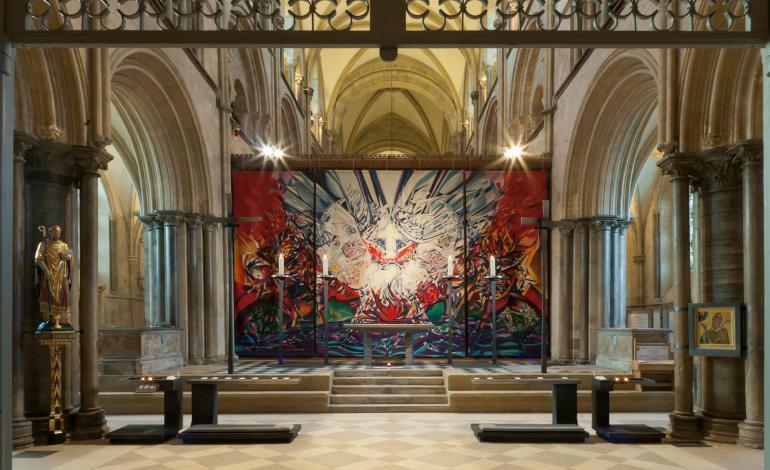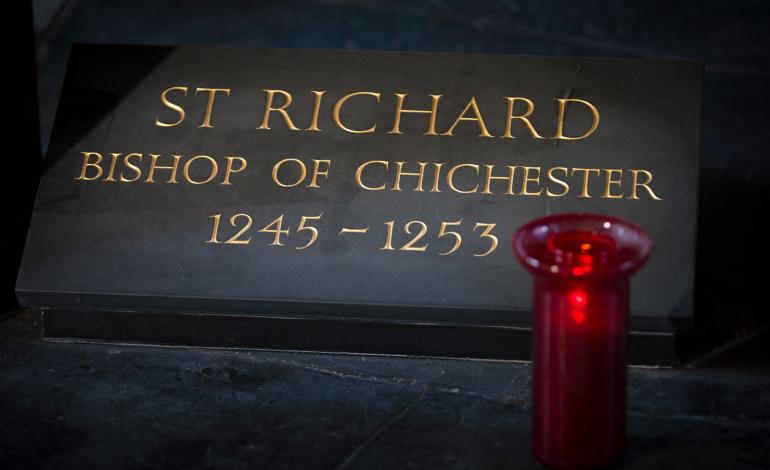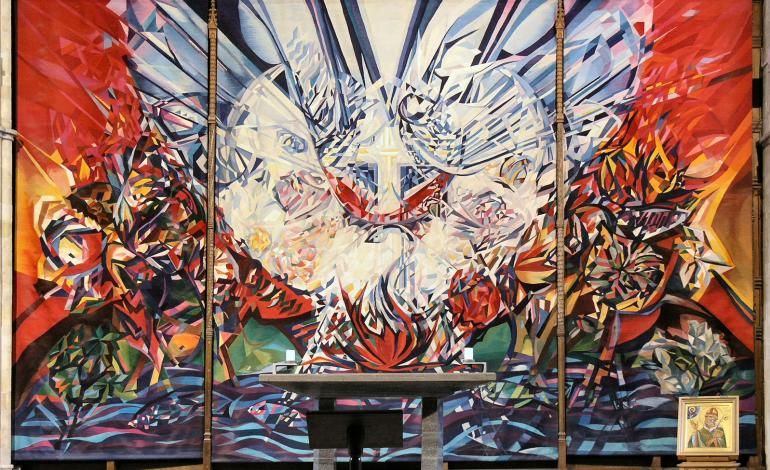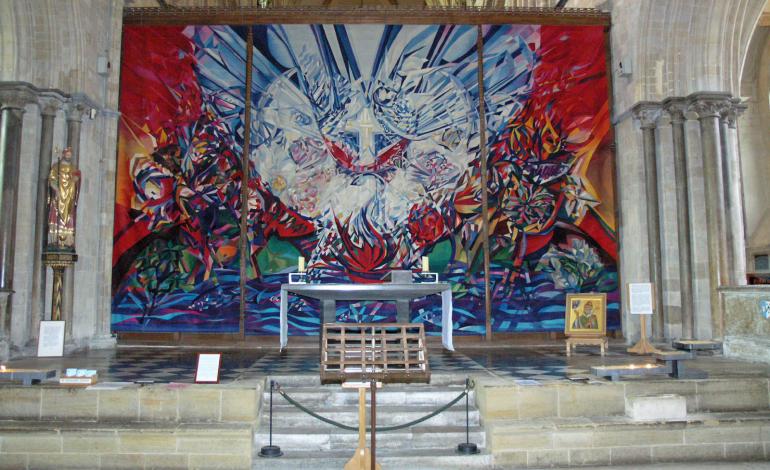The Shrine of St Richard
In this increasingly secular age it is difficult to imagine the draw of Pilgrimage and the power of popular Shrines but in the Middle Ages the Church was a controlling influence on life and they had immense importance both to the individual and the Cathedral concerned.
The Shrine of St Richard, our own Saint and a Bishop here in the 13th century, is considered by some to be the third most important in the land, after St Thomas à Becket in Canterbury and the shrine at Our Lady in Walsingham, so brought pilgrims to both the city and the cathedral.
After his death in 1253, Richard de Wych, Bishop of Chichester, was buried in the chapel of St Thomas and St Edmund, located on the north side of the Nave. Records suggest that the translation of St Richard's body in 1276 saw it taken to what later became a 'silver-gilt shrine, encrusted with jewels behind the high altar'. The gifts that were brought to the shrine provided the funds that largely ran the Cathedral. So a pilgrim must have been greeted with a fairly awe-inspiring sight, which of course was the intention.
The entire shrine was dismantled and ‘razed to the ground’ on the orders of King Henry VIII in 1538. On the 20th December 1538 it is recorded that, after the destruction of the shrine, items taken away and delivered to the Tower of London included ’six coffers, a casket and a little box’ - in all containing some 112 images in silver-gilt, relics and jewels. The casket alone contained 51 jewels set with stones and pearls and the little box 31 rings and other jewels.
The Saint’s bones were scattered and all the treasures gifted by pilgrims were taken to the Treasury in the Tower of London so that ‘the people may not have any place to worship idolatry’. However, one of his bones found its way back when Bishop Eric Kemp was offered a bone attributed to St Richard from the Reliquary of the Abbey de La Lucerne in Normandy on a visit there in 1992. This offer was accepted and the bone is interred under a simple slab beneath the altar with a sanctuary candle burning near it.
The Modern Shrine
In modern times people still visit the Shrine area to pray and light candles, so it was decided in 2011 to give more appropriate form to the area, using a fund set up in memory of Bishop Kemp.
The modern area is a raised platform with a Purbeck marble altar designed by Robert Potter in 1984, flanked by two 16th century tombs to Bishops George Day and William Barlow.
On the two purbeck marble pillars of the Retroquire are a statue of St Richard (1938) and an ikon by Sergei Fyodorov, dated 2003 (see more on this below).
The spiritual focus is provided by the backcloth of the Anglo-German Tapestry, which illustrates some of the miracles associated with the saint. The tapestry is complemented by candlesticks and crosses, together with kneelers and devotional candle stands designed in 2011 by Jonathan Clarke, Geoffrey Clarke’s son, in his father’s favourite material of cast aluminium in memory of Bishop Kemp.
The Anglo-German Tapestry
The beautiful Anglo-German tapestry, designed by the artist Ursula Benker-Schirmer, took three and a half years from conception to completion and is made using pure linen, silk and cotton.
It was designed to harmonise with the architecture and colours of the nearby Chagall window. The centre panel was woven in Germany and the two side panels at West Dean College, north of Chichester. Benker-Schirmer assembled the forms as if they were rock crystal fragments. The tapestry was dedicated on 15th June 1985.
Principal Symbols of the Tapestry
The Chalice: symbol of St Richard of Chichester, at the centre of the tapestry with the cross above it. The red wine at the bottom of the chalice signifies the blood of Christ.
The Candle: symbolises light and fire.
The Fig Trees: in the side panels are symbols of life and fecundity. St Richard had one in his garden and taught a priest how to graft them.
The Fish: along the lower area are traditional Christian symbols.
The Dove: above the Cross; symbol of the Holy Spirit and of peace.
The Triangle: symbol of the Holy Trinity.
The Lotus: in red, it emerges from the water. It supports the chalice and the cross. It is often used as a Christian symbol of birth and rebirth in Christ.
The Serpent: emerges from the lotus and rises below the cross. It symbolises struggle, temptation, suffering and hardship.
The Cross: the symbol of the victorious cross is at the centre. It is the cross of suffering.
The Circle: the artist suggests several interpretations - the world, the cycle of life, the symbol of infinity, God at the centre of our life. The tapestry shows it broken to “open the way to Eternity”.
Ikon of St Richard
The Ikon of St Richard was commissioned in 2003 by the Dean and Chapter to commemorate the 750th anniversary of the death of Chichester’s Saint. It was generously paid for by the Friends of Chichester Cathedral. It was painted by the artist Sergei Fyodorov, who is acknowledged as one of the foremost living icon-painters, with commissions in several English cathedrals.
Richard is depicted in episcopal vestments, with his hand raised in blessing towards the viewer; in the upper part of the icon Christ appears acknowledging Richard’s supplication.
During the Spring of 2003, to commemorate the 750th anniversary of Richard’s death, the icon was carried on a symbolic journey from Dover, where he died, to his burial place in Chichester Cathedral. Parishes on the way organised local celebrations and services, ending as the icon was carried by boat up the Chichester canal and in procession to the Cathedral.



